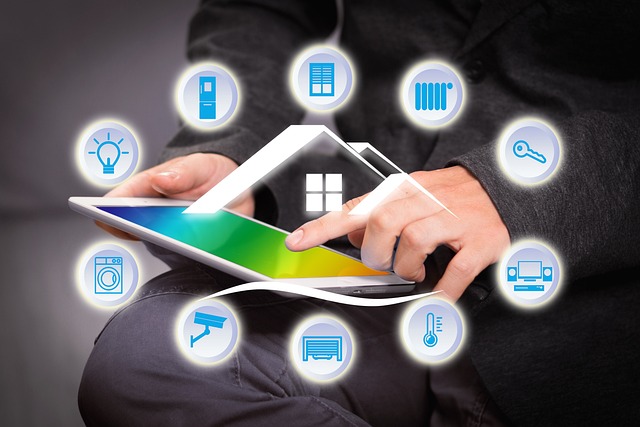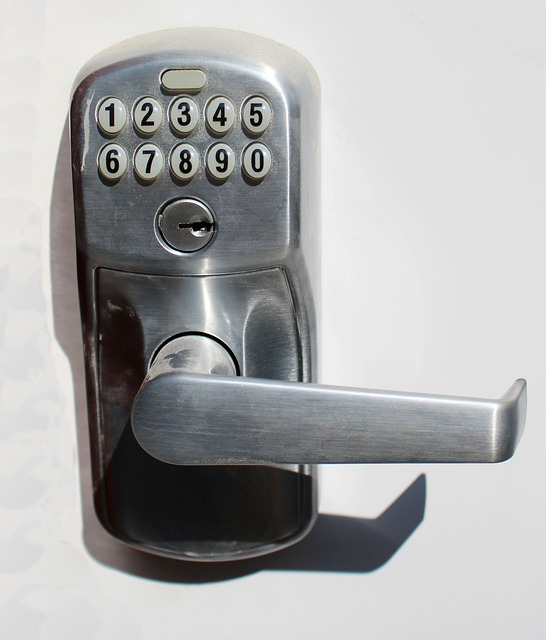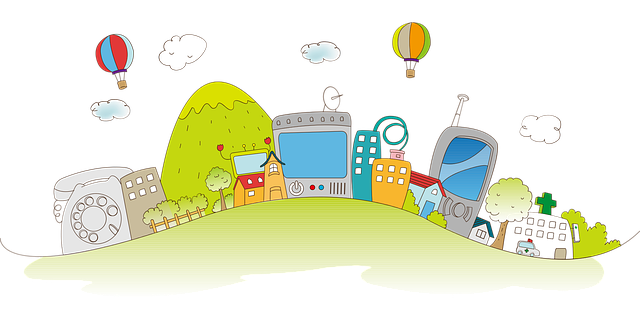This article discusses the significance of advanced senior home safety systems in ensuring the well-being and safety of the elderly. It highlights the role of tailored emergency response mechanisms, such as medical alert systems with fall detection devices, in providing immediate assistance to seniors. The integration of smart home technology, including motion sensor lights, voice-activated controls, and elder-specific security cameras, enhances security and promotes independent living for older adults while safeguarding their health and dignity within the familiar confines of their homes. Proactive monitoring services are equipped with sensors that detect abnormal activities or changes in movement patterns, ensuring prompt response to potential hazards or medical emergencies. The article emphasizes that these comprehensive systems are designed to protect seniors from a variety of risks by alerting caregivers or emergency services in real time, offering a robust framework for senior home safety. Key components like fall detection devices, motion sensor lights, and senior-friendly security cameras work together with medical alert systems for seniors to provide a multi-layered approach to safety that respects the privacy of the elderly while ensuring their protection. The adoption of these technologies not only supports the autonomy of older adults but also offers peace of mind to families by providing reliable emergency response systems specifically designed for the elderly, ultimately underscoring a commitment to improving the quality of life and safety for seniors in their homes.
As the population ages, ensuring the safety and well-being of our seniors becomes paramount. This article delves into the advancements in user-friendly safety systems designed specifically for the elderly, focusing on how technology can enhance their home environments without compromising comfort. We’ll explore the critical role of medical alert systems, fall detection devices, and smart home innovations that cater to the unique needs of seniors. From motion sensor lights to senior-friendly security cameras, these systems are not just about prevention; they’re about empowering older adults to live independently with confidence, knowing that emergency response systems for the elderly are always at their service. Join us as we navigate the intersection of safety and livability in senior home safety systems, ensuring that the golden years are as secure as they are enjoyable.
- Enhancing Elderly Home Safety: A Guide to Senior-Friendly Security Systems
- – Overview of the importance of home safety for seniors
- – Highlighting the role of medical alert systems for timely assistance
- – Discussing fall detection devices and their significance in preventing injuries
Enhancing Elderly Home Safety: A Guide to Senior-Friendly Security Systems

When prioritizing the safety and well-being of seniors within their homes, a comprehensive approach to home security is paramount. Senior home safety systems are designed with features that cater specifically to the needs of older adults, offering peace of mind to both the elderly and their loved ones. These systems often include emergency response mechanisms tailored for elderly use, ensuring help is always at hand in case of an incident. Medical alert systems for seniors, equipped with fall detection devices, are critical components of these safety systems, providing immediate assistance should a senior experience a fall or medical emergency. Furthermore, integrating smart home technology can significantly enhance safety; smart locks, motion sensor lights for seniors, and senior-friendly security cameras all contribute to a secure living environment that respects the independence and privacy of the elderly resident.
In addition to reactive measures, proactive monitoring plays a crucial role in maintaining elderly home safety. Elderly home monitoring services offer 24/7 observation, alerting response teams to potential hazards such as gas leaks or fires, and providing a continuous watch over the senior’s health status. These systems can be equipped with sensors that detect abnormal activity or changes in movement patterns, which may indicate a fall or an emergency situation. Additionally, the incorporation of smart home automation allows seniors to manage their living spaces more easily, with features like voice commands and intuitive interfaces that accommodate potential physical limitations. By focusing on both responsive and proactive measures, these sophisticated senior-friendly security systems not only protect against external threats but also safeguard the health and dignity of aging individuals in their own homes.
– Overview of the importance of home safety for seniors

As we age, the importance of a safe and secure living environment becomes paramount. Senior home safety systems are designed to address this need by providing comprehensive solutions that protect seniors from various risks within their homes. Elderly home monitoring encompasses a range of technologies that not only alert caregivers or emergency services in case of falls or medical emergencies but also offer peace of mind for both the senior and their loved ones. Medical alert systems for seniors are a critical component of this ecosystem, offering immediate access to help with the press of a button. These systems are equipped with fall detection devices that can automatically detect and signal for assistance when a fall is detected, ensuring prompt response and minimizing the risk of injury or prolonged immobility.
Incorporating smart home safety features tailored for the elderly enhances the ability to live independently while maintaining safety. Smart home systems can automate lighting with motion sensor lights for seniors, reducing the risk of tripping in dimly lit areas and ensuring clear pathways throughout the home. Additionally, senior-friendly security cameras provide an extra layer of protection by allowing monitoring of the home environment without the complexity that might be overwhelming for some seniors. Emergency response systems for the elderly are also a vital aspect of these comprehensive safety solutions, offering real-time communication with emergency personnel and ensuring swift intervention in critical situations. These advanced technologies combine to create a robust framework for senior home safety, fostering an environment where seniors can thrive with autonomy and security.
– Highlighting the role of medical alert systems for timely assistance

In recent years, the integration of technology into elder care has significantly enhanced home safety systems for seniors. Medical alert systems, a cornerstone of senior home safety, provide a direct line to emergency response services with the push of a button. These systems are designed to detect falls and alert trained personnel, ensuring timely assistance and peace of mind for both seniors and their loved ones. The evolution of elderly home monitoring has led to the development of fall detection devices that can automatically call for help even if the user is unable to do so themselves. Beyond alert systems, smart home safety features tailored for the elderly include motion sensor lights that activate in response to movement, thereby reducing the risk of tripping in dimly lit areas and facilitating nighttime navigation.
Moreover, senior-friendly security cameras have become an integral part of home monitoring solutions, allowing family members or caregivers to visually monitor their well-being from a distance. These cameras are designed with privacy in mind, capturing only what is necessary to ensure safety without overstepping boundaries. Additionally, motion sensor lights for seniors not only enhance visibility but also act as a deterrent against potential intruders, offering an additional layer of security. Together with medical alert systems, these smart home safety components form a comprehensive emergency response system for the elderly, fostering an environment where seniors can maintain their independence while enjoying the assurance that help is readily available in case of an incident.
– Discussing fall detection devices and their significance in preventing injuries

The integration of advanced senior home safety systems plays a pivotal role in enhancing the well-being and autonomy of the elderly. Among these, medical alert systems for seniors are particularly noteworthy for their fall detection devices, which are designed to automatically detect a fall and alert emergency services or a caregiver, potentially preventing serious injuries. These systems often come with elderly home monitoring capabilities, ensuring continuous supervision without invasive surveillance. The importance of these safety measures is underscored by statistics that indicate falls as a leading cause of injury among the elderly. To complement these systems, smart home safety for elderly residents can include motion sensor lights that activate in their vicinity, providing safe navigation and reducing the risk of tripping or stumbling in dimly lit areas. Additionally, senior-friendly security cameras can be strategically placed to monitor without intruding, offering a sense of security and peace of mind for both seniors and their loved ones.
Incorporating fall detection devices within elderly home monitoring systems is a critical component of a comprehensive safety strategy. These devices are equipped with sophisticated algorithms that distinguish between a fall and regular activity, minimizing the risk of false alarms. Moreover, emergency response systems for the elderly ensure that help is on the way swiftly after an incident is detected, potentially saving lives by providing timely medical attention. The deployment of these systems in seniors’ homes also extends to motion sensor lights for seniors, which not only aid in their mobility but also act as a deterrent against potential intruders, adding another layer of security to their living environment. With the advent of technology, these safety measures are becoming more intuitive and user-friendly, making it easier for seniors to navigate their homes safely and independently.
In conclusion, the integration of user-friendly safety systems tailored for seniors significantly enhances their home environment, promoting both autonomy and peace of mind. The adoption of comprehensive senior home safety systems, including medical alert systems, fall detection devices, smart home safety features, and motion sensor lights, alongside emergency response systems, collectively forms a robust protective framework for the elderly. These innovations are not just about surveillance or security; they are lifelines that enable seniors to maintain their independence while ensuring they have immediate access to help in case of an incident. By embracing these technologies, we empower our aging population to live safely and confidently within the comfort of their own homes, where they can age with dignity and security.
